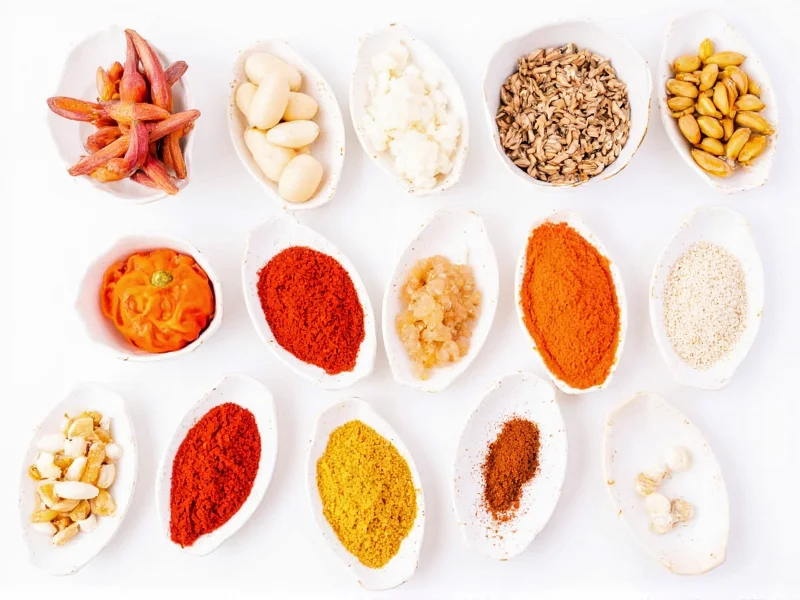Paprika, the vibrant red spice made from ground peppers, has journeyed from Central America to global kitchens, becoming indispensable in culinary traditions across continents. This versatile spice offers more than just color—it brings nuanced flavors that can transform ordinary dishes into extraordinary culinary experiences. Understanding the diverse uses for paprika allows home cooks and professional chefs alike to leverage its full potential in everyday cooking.
Culinary Applications of Paprika
As one of the most versatile spices in the pantry, paprika serves multiple functions in cooking beyond simple seasoning. Its rich red hue makes it an excellent natural colorant, while its complex flavor profile ranges from sweet and mild to deeply smoky or intensely hot, depending on the variety.
Meat Seasoning and Rubs
One of the most common uses for paprika involves seasoning meats before cooking. The spice creates a beautiful crust on grilled or roasted meats while imparting subtle flavor notes. For optimal results when using paprika in meat rubs:
- Combine with salt, garlic powder, and black pepper for a versatile all-purpose rub
- Use smoked paprika for barbecue applications to enhance the grilled flavor
- Mix with brown sugar for a sweet-spicy crust on pork or chicken
- Apply generously to steak before searing for added depth
Sauces, Stews, and Soups
Paprika shines in liquid-based dishes where it has time to infuse its color and flavor throughout the preparation. Traditional Hungarian goulash relies on sweet paprika as its signature ingredient, while Spanish recipes frequently incorporate smoked paprika into tomato-based sauces. When adding paprika to sauces:
- Bloom the spice in oil before adding liquids to maximize flavor extraction
- Add toward the beginning of cooking for deeper flavor integration
- Use Hungarian sweet paprika for authentic Central European dishes
- Stir in smoked paprika at the end for more pronounced smoky notes
| Type of Paprika | Flavor Profile | Best Culinary Uses |
|---|---|---|
| Sweet Paprika | Mild, slightly sweet, earthy | Traditional Hungarian dishes, deviled eggs, potato salad, light sauces |
| Smoked Paprika (Pimentón) | Deeply smoky, ranging from sweet to hot | Spanish chorizo, paella, barbecue rubs, roasted vegetables, bean dishes |
| Hot Paprika | Spicy with varying heat levels | Spicy sausages, chili recipes, hot sauces, bold meat dishes |
| Sweet Hungarian Paprika | Distinctly sweet with complex fruit notes | Authentic goulash, chicken paprikash, traditional Central European cuisine |
Vegetable Enhancement
Paprika transforms simple vegetable preparations with minimal effort. Toss roasted vegetables with a light coating of oil and paprika before cooking for enhanced flavor and vibrant color. Specific applications include:
- Roasted potatoes with sweet paprika and garlic
- Grilled zucchini and eggplant with smoked paprika
- Steamed carrots finished with a paprika and butter mixture
- Deviled eggs with paprika topping for classic presentation
Baking and Unexpected Applications
While primarily associated with savory dishes, paprika finds surprising uses in baking and other creative applications. Some innovative uses for paprika include:
- Adding subtle complexity to chocolate-based desserts
- Enhancing cheese spreads and dips with a touch of smoked paprika
- Creating visually striking pink-hued salad dressings
- Infusing oils for distinctive finishing touches
- Adding depth to vegetarian burger blends
Health Benefits and Non-Culinary Uses
Beyond its culinary applications, paprika offers notable health benefits due to its high vitamin content and antioxidant properties. The spice contains significant amounts of vitamin A, vitamin E, and carotenoids that support eye health and immune function. When exploring practical uses for paprika beyond cooking:
- Natural food coloring for homemade products
- Ingredient in DIY beauty treatments for skin health
- Additive in gardening for natural pest control
- Component in traditional medicinal preparations
Storage and Quality Preservation
To maintain the vibrant color and flavor of paprika, proper storage is essential. Exposure to light, heat, and air degrades paprika's quality rapidly. For optimal preservation:
- Store in an airtight container away from direct light
- Keep in a cool, dark pantry rather than near the stove
- Refrigerate for extended shelf life (up to 2 years)
- Check for freshness by aroma—dull or musty smell indicates degradation
Substitution Strategies
When paprika isn't available, understanding appropriate substitutions prevents recipe failure. Different types require different alternatives:
- Sweet paprika: Mix cayenne with tomato powder in 1:4 ratio
- Smoked paprika: Combine regular paprika with liquid smoke (1 drop per teaspoon)
- Hot paprika: Use cayenne pepper at half the quantity
- For color only: Tomato paste diluted with water
Traditional Regional Applications
Certain cuisines have developed signature uses for paprika that define their culinary identity. Exploring these traditional applications provides insight into the spice's versatility:
- Hungarian cuisine: Essential in goulash, chicken paprikash, and fisherman's soup
- Spanish cooking: Fundamental in chorizo, patatas bravas, and paella
- Middle Eastern preparations: Featured in za'atar blends and various dips
- Indian recipes: Incorporated into some curry blends for color and mild heat
- American Southern cooking: Used in barbecue rubs and spice blends











 浙公网安备
33010002000092号
浙公网安备
33010002000092号 浙B2-20120091-4
浙B2-20120091-4